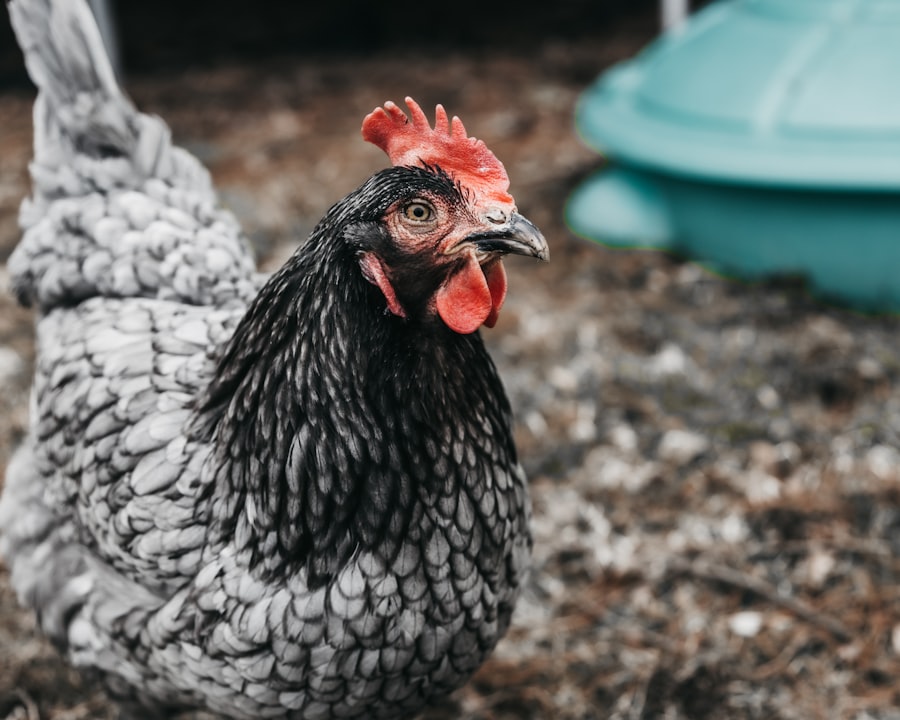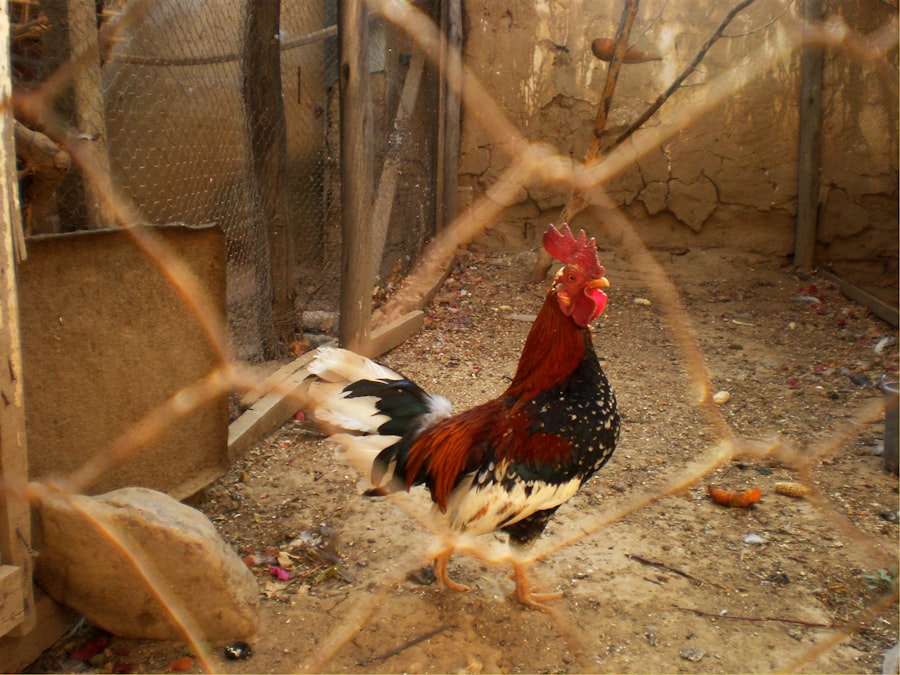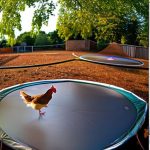Space is a critical factor in chicken production, directly impacting the health, well-being, and productivity of birds. Adequate space allows chickens to exhibit natural behaviors, reduces stress, and minimizes disease transmission risk. Overcrowding can lead to increased aggression, reduced feed intake, and compromised immune function, resulting in poor growth rates, decreased egg production, and higher mortality rates.
Limited space may also cause poor air quality and increased ammonia levels, further compromising bird health. Understanding space’s impact on chicken production is essential for implementing effective management practices that promote bird welfare and productivity. Optimizing chicken production requires consideration of space requirements for different chicken breeds and production systems.
Broiler chickens raised for meat production need more space than laying hens due to their larger size and increased activity. Free-range and pasture-based systems require more space per bird compared to conventional cage systems. By understanding specific space needs for various chicken breeds and production systems, farmers can make informed decisions about housing design, stocking density, and management practices to ensure their birds’ well-being and productivity.
Table of Contents
- 1 The importance of adequate space for chicken health and well-being
- 2 How lack of space can affect egg production in chickens
- 3 The behavioral and physiological effects of overcrowding on chickens
- 4 Strategies for maximizing space and improving chicken production
- 5 The role of environmental enrichment in mitigating the effects of limited space on chicken production
- 6 The potential economic and ethical implications of addressing space limitations in chicken farming
- 7 FAQs
Key Takeaways
- Adequate space is crucial for the health and well-being of chickens, as it can impact their behavior and physiology.
- Lack of space can lead to decreased egg production in chickens, affecting the overall productivity of the farm.
- Overcrowding can result in negative behavioral and physiological effects on chickens, such as increased aggression and stress.
- Maximizing space and implementing environmental enrichment strategies can help improve chicken production and mitigate the effects of limited space.
- Addressing space limitations in chicken farming not only has potential economic benefits but also ethical implications, as it can improve the welfare of the animals.
The importance of adequate space for chicken health and well-being
Reducing Stress and Behavioral Problems
Providing adequate space for chickens is crucial for their health and well-being. When chickens have enough room to move around, stretch their wings, and engage in natural behaviors like dust bathing and foraging, they are less likely to experience stress and behavioral problems. In contrast, overcrowding can lead to increased aggression, feather pecking, and cannibalism, which compromise the welfare of the birds and result in economic losses for farmers.
Preventing Health Risks
Limited space can also lead to poor air quality, high ammonia levels, and an increased risk of disease transmission, all of which can negatively impact the health of the birds. Furthermore, adequate space is essential for ensuring that chickens have access to feed and water without competition or restriction.
Promoting Health and Productivity
When chickens are overcrowded, dominant birds may monopolize access to feed and water, leading to malnutrition and dehydration in subordinate birds. This can result in uneven growth rates, reduced egg production, and increased mortality rates. By providing adequate space for feeding and drinking, farmers can ensure that all birds have equal access to essential resources, promoting the health and productivity of the flock.
How lack of space can affect egg production in chickens

The lack of adequate space can have a significant impact on egg production in chickens. When hens are overcrowded, they may experience increased stress, which can disrupt their reproductive hormones and reduce their egg-laying performance. Additionally, limited space can lead to increased aggression and feather pecking, which can cause physical injuries and stress in the hens.
This can result in reduced egg quality and higher rates of floor eggs, which are more likely to be contaminated and damaged. Furthermore, overcrowding can lead to poor air quality and high ammonia levels, which can negatively impact the respiratory health of the hens and reduce their ability to produce eggs. In addition to the physiological effects of overcrowding on egg production, limited space can also impact the behavior of the hens.
When chickens are overcrowded, they may exhibit abnormal behaviors such as feather pecking and cannibalism, which not only compromise their welfare but also distract them from engaging in natural behaviors such as nesting and egg laying. This can result in decreased egg production and increased rates of egg breakage. By providing adequate space for nesting and egg laying, farmers can promote the natural behavior of the hens and optimize their egg-laying performance.
The behavioral and physiological effects of overcrowding on chickens
Overcrowding can have significant behavioral and physiological effects on chickens. When birds are crowded together in limited space, they may experience increased stress, which can lead to abnormal behaviors such as aggression, feather pecking, and cannibalism. These behaviors not only compromise the welfare of the birds but also result in physical injuries and increased mortality rates.
Additionally, overcrowding can disrupt the social hierarchy within the flock, leading to increased competition for resources such as feed and water. This can result in uneven growth rates, reduced egg production, and poor overall performance of the birds. Furthermore, overcrowding can have physiological effects on chickens, including compromised immune function and increased susceptibility to disease.
When birds are stressed due to overcrowding, their immune system may be suppressed, making them more vulnerable to infectious diseases. Additionally, poor air quality and high ammonia levels resulting from overcrowding can negatively impact the respiratory health of the birds, leading to respiratory diseases that can further compromise their overall well-being. By understanding the behavioral and physiological effects of overcrowding on chickens, farmers can implement management practices that promote the welfare and productivity of their flocks.
Strategies for maximizing space and improving chicken production
There are several strategies that farmers can implement to maximize space and improve chicken production. One approach is to optimize housing design to provide adequate space for different chicken breeds and production systems. For example, providing larger floor space per bird in broiler houses and incorporating perches and nest boxes in layer houses can promote natural behaviors and reduce stress in the birds.
Additionally, farmers can implement management practices such as regular cleaning and ventilation to maintain good air quality and reduce ammonia levels in the housing environment. Another strategy for maximizing space is to implement rotational grazing or range-based systems for free-range chickens. By allowing chickens access to outdoor areas where they can forage and exercise, farmers can reduce stocking density indoors and provide additional space for the birds to exhibit natural behaviors.
Furthermore, implementing feeding and watering systems that minimize competition and allow all birds equal access to essential resources can help optimize space utilization and promote the health and productivity of the flock.
The role of environmental enrichment in mitigating the effects of limited space on chicken production

Natural Behaviors and Stress Reduction
Providing chickens with opportunities to engage in natural behaviors such as perching, dust bathing, foraging, and nesting can help reduce stress and behavioral problems associated with overcrowding. For example, providing perches or platforms in the housing environment allows chickens to move off the ground and exhibit roosting behavior, reducing aggression and promoting social interactions within the flock.
Environmental Enrichment Strategies
Environmental enrichment can be achieved through various strategies, including providing access to dust bathing areas or substrate materials such as straw or wood shavings, which allows chickens to engage in natural dust bathing behavior and maintain feather quality. Additionally, hanging objects such as pecking blocks or mirrors in the housing environment can provide chickens with novel stimuli that encourage exploration and play behavior, reducing boredom and frustration.
Outdoor Access and Foraging Opportunities
Providing access to outdoor areas for free-range chickens allows them to forage for insects and vegetation, promoting natural behaviors and reducing stress associated with limited space indoors. This approach can help improve the overall welfare of chickens and reduce the negative impacts of limited space on chicken production.
The potential economic and ethical implications of addressing space limitations in chicken farming
Addressing space limitations in chicken farming has both economic and ethical implications. From an economic perspective, providing adequate space for chickens can result in improved productivity and profitability for farmers. By reducing stress and behavioral problems associated with overcrowding, farmers can expect better growth rates in broiler chickens, higher egg-laying performance in laying hens, and lower mortality rates across all production systems.
Additionally, improved air quality resulting from reduced stocking density can lead to lower veterinary costs associated with respiratory diseases and other health issues. From an ethical standpoint, addressing space limitations in chicken farming is essential for promoting the welfare of the birds. Chickens are sentient beings capable of experiencing pain, distress, and positive emotions.
By providing them with adequate space to exhibit natural behaviors and live comfortably, farmers can fulfill their ethical responsibility to ensure the well-being of the animals under their care. Furthermore, addressing space limitations aligns with consumer expectations for humane animal treatment and sustainable farming practices. By prioritizing animal welfare in chicken farming operations, farmers can build trust with consumers and enhance the reputation of their products in the marketplace.
In conclusion, understanding the impact of space on chicken production is essential for promoting the health, well-being, and productivity of the birds. Adequate space allows chickens to exhibit natural behaviors, reduces stress, and minimizes the risk of disease transmission. Lack of space can have significant effects on egg production, behavior, physiology, as well as economic implications on chicken farming operations.
Implementing strategies such as optimizing housing design, rotational grazing or range-based systems for free-range chickens as well as environmental enrichment plays a crucial role in mitigating the effects of limited space on chicken production. Addressing space limitations has both economic benefits such as improved productivity as well as ethical implications by promoting animal welfare in chicken farming operations.
If you’re interested in learning more about creating a suitable living space for chickens, you should check out the article on farmhouse chicken coops on Poultry Wizard’s website. This article provides valuable information on how to design and build a coop that meets the needs of your chickens while maximizing the available space. It’s a great resource for anyone looking to improve their chicken’s living conditions. (source)
FAQs
What is the impact of lack of space on chicken production?
Lack of space can lead to stress and aggression among chickens, which can negatively impact their egg production and overall health.
How much space do chickens need to produce eggs effectively?
Chickens need at least 1-2 square feet of space per bird in the coop, and access to a larger outdoor area for foraging and exercise, in order to produce eggs effectively.
What are the signs that chickens are not producing due to lack of space?
Signs that chickens are not producing due to lack of space include feather pecking, cannibalism, decreased egg production, and overall poor health.
How can lack of space be addressed to improve chicken production?
Lack of space can be addressed by providing a larger coop and outdoor area for the chickens, as well as ensuring that the flock is not overcrowded. Regular monitoring and management of the flock’s behavior and health is also important.
Meet Walter, the feathered-friend fanatic of Florida! Nestled in the sunshine state, Walter struts through life with his feathered companions, clucking his way to happiness. With a coop that’s fancier than a five-star hotel, he’s the Don Juan of the chicken world. When he’s not teaching his hens to do the cha-cha, you’ll find him in a heated debate with his prized rooster, Sir Clucks-a-Lot. Walter’s poultry passion is no yolk; he’s the sunny-side-up guy you never knew you needed in your flock of friends!







